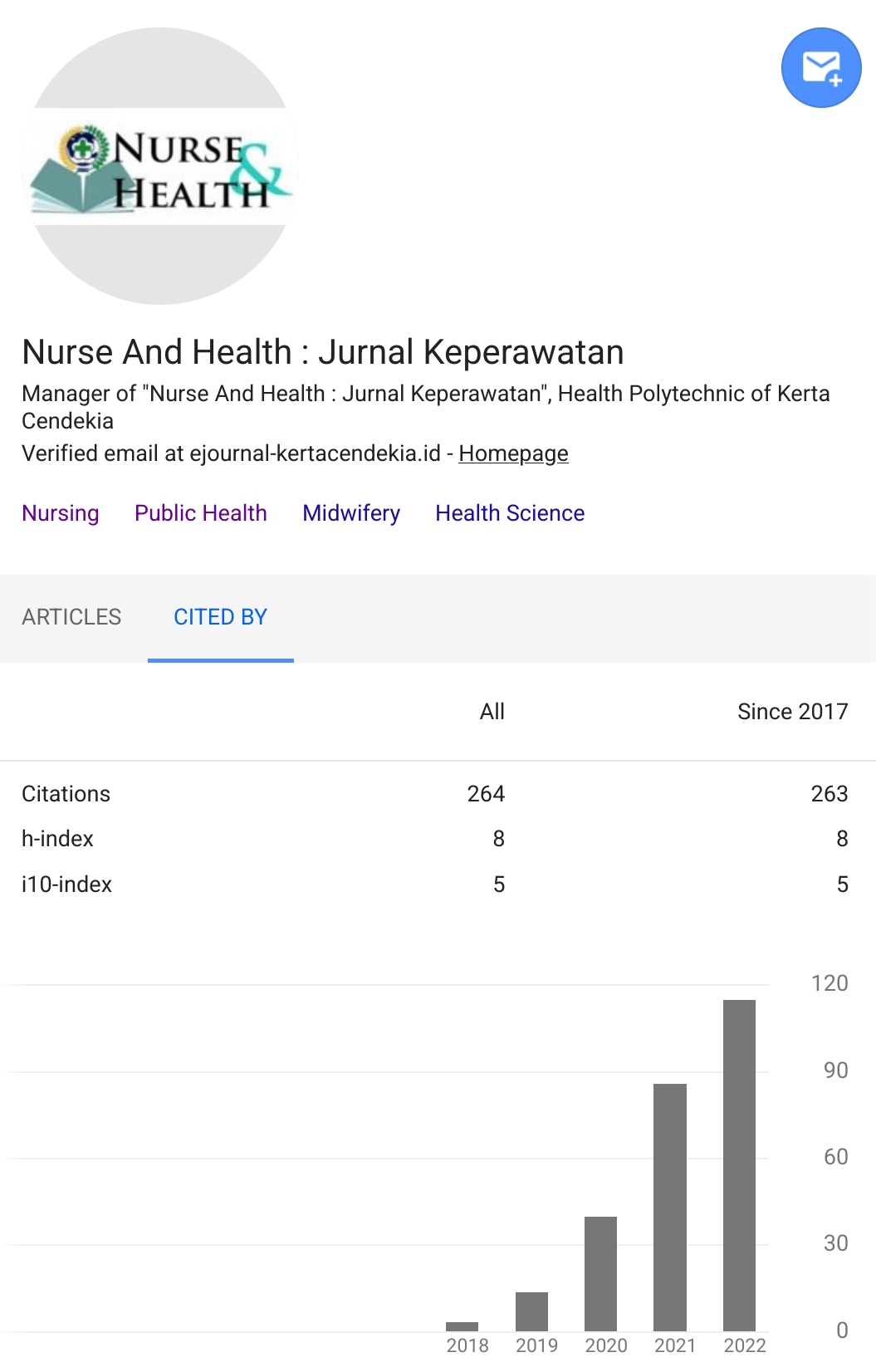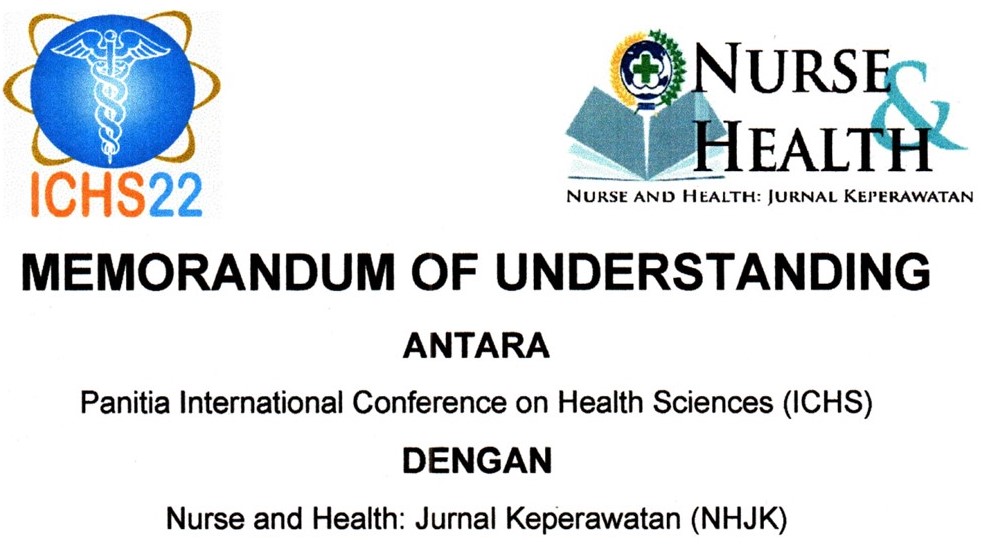EFFECTIVENESS OF REPRODUCTIVE HEALTH CARD ON ADOLESCENTS' UNDERSTANDING OF THE TRIAD KRR
Abstract
Background: Adolescence is a transition period from childhood to adulthood. Adolescents' physical and psychological changes develop in line with their curiosity about the changes they are experiencing. The changes experienced by teenagers will not be a nuisance if teenagers understand the changes that occur in their bodies. In connection with changes in adolescents, the problem that often occurs is the Three Basic Threats to Adolescent Reproductive Health (TRIAD KRR). Objective: The aim of the research was to determine the effectiveness of the Reproductive health card on adolescents' understanding of TRIAD KRR. Method: This research design was quasi-experimental with one group pre-test and post-test design. In this study, research subjects were first given a questionnaire as a pretest to determine students' initial understanding before being given education about TRIAD KRR using a reproductive health card. After the pre-test, the students were then given education about TRIAD KRR using a reproductive health card. Next, the students were given a final test (posttest) to find out the extent of their understanding of TRIAD KRR using a reproductive health card. Results: The results of the study showed that there was an increase in students' understanding of TRIAD KRR after being given reproductive health card educational media. Conclusion: Reproductive health card educational media has an impact on increasing students' understanding of TRIAD KRR. The Wilcoxon test obtained a value of p = 0.002 (p<0.05), statistically confirming that educational media has a better impact.Downloads
References
Centers for Disease Control and Prevention. Youth risk beahvior surveillance- United States, 2019 [Internet]. Vol. 69. United States: U.S. Department of Health and Human Services; 2020. 88 p. Available from: https://www.cdc.gov/healthyyouth/data/yrbs/index.htm
Oktriyanto O, Alfiasari A. Dating and Premarital Sexual Inisiation on Adolescence in Indonesia. J Kesehat Masy. 2019;15(1):98–108. DOI: https://doi.org/10.15294/kemas.v15i1.17270
BKKBN, BPS, RI K, USAID. Survei Demografi dan Kesehatan Indonesia 2017: Kesehatan Reproduksi Remaja. Badan Kependud dan Kel Berencana Nas. 2017;1–23.
Akmal Latif S, Zulherawan M. Penyimpangan Sosial Dalam Prilaku Seks Bebas Dikalangan Remaja. Sisi Lain Realita. 2020;4(2):56–75. DOI: https://doi.org/10.25299/sisilainrealita.2019.vol4(2).4827
Yanti, Hamidah, Wiwita. Analisis Faktor Penyebab Dan Dampak Pernikahan Dini Di Kecamatan Kandis Kabupaten Siak. J Ibu dan Anak. 2018;6(2):96–103.
Mardyantari E, Firdauz MA, Pujiningtyas LR, Yutifa H, Susanto S, Sunarsi S. Hubungan Media Pornografi dengan Perilaku Seksual Pranikah pada Remaja. Str J Ilm Kesehat. 2018;7(1):36–9. DOI: https://doi.org/10.30994/sjik.v7i1.145
Kemenkes RI. Profil Kesehatan Indonesia [Internet]. Pusdatin.Kemenkes.Go.Id. 2023. Kementrian Kesehatan Republik Indonesia. Available from: https://www.kemkes.go.id/downloads/resources/download/pusdatin/profil-kesehatan-indonesia/Profil-Kesehatan-2021.pdf
High School Peer Resource Program Basic Skills Curriculum. Available from: https://www.browardprevention.org/wp-content/uploads/2014/02/CAL-High-School-Peer-Resource-Program-Basic-Skills-Curriculum.pdf
Sommers‐Flanagan. Counseling and Psychotherapy Theories in Context and Practice. 2018. 595 p. DOI: https://doi.org/10.1002/9781394258963
Liqoiyah I, Santoso H, Sumiyem. Modul Konseling Sebaya. 2022. 4–8 p.
Pandang A. Program Konseling Sebaya di Sekolah. [Internet]. Grha Cipta Media. 2019. 1–142 p. Available from: http://eprints.unm.ac.id/id/eprint/22417
Metodologi Penelitian Kesehatan. Jakarta: PT. Rineka Cipta.; 2018.
Copyright (c) 2025 Yuliyanik, Wira Daramatasia

This work is licensed under a Creative Commons Attribution-NonCommercial 4.0 International License.
Authors who publish with Nurse and Health: Jurnal Keperawatan agree to the following terms:
- Authors retain copyright licensed under a Creative Commons Attribution-NonCommercial 4.0 (CC BY-NC 4.0), which allows others to remix, tweak, and build upon the authors' work non-commercially, and although the others' new works must also acknowledge the authors and be non-commercial, they don't have to license their derivative works on the same terms.
- Authors are permitted and encouraged to post their work online (e.g., in institutional repositories or on their website) prior to and during the submission process, as it can lead to productive exchanges, as well as earlier and greater citation of published work (See The Effect of Open Access). Authors can archive pre-print and post-print or publisher's version/PDF.






















